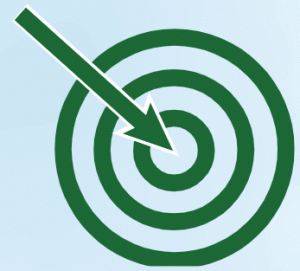 By David Vaught, USGTF Teaching Professional Bradenton, Florida
By David Vaught, USGTF Teaching Professional Bradenton, Florida
It is often said necessity is the mother of invention. This applies to golf instruction, and golf in general in many circumstances, one of which is the creativity of an experienced instructor when it comes to helping golfers improve their game. With that thought in mind, I felt it appropriate to look again at a method to help golfers improve their putting.
Many years ago, a major golf publication published an article about looking at the target while putting. The basic conclusion was that the average golfer could improve their putting by 28 percent. To quantify that, the average golfer would drop about four to six strokes per round. The first premise is simply common sense. When one begins reciting the list of sports where the athlete looks at a target, it is not a short one. Throwing a baseball or softball, bowling, throwing a football, darts, curling, cornhole, and the list goes on. We train our brains and muscles to work this way from the crib.
Should we start a “looking at the target while putting” revolution in golf? Of course not. This can simply be a tool for teaching. One very useful outcome of practicing this for putting would be distance control. Again, think about why we look at the target for the other sports. It triggers a response in our brain that we are born with and utilize at a very young age. That skill is the judging of distance, using our eyes in coordination with the speed and effort put forth into the motion that achieves the desirable distance – exactly what the average golfer needs to do to improve their putting. Keep in mind what we know to be true: The overwhelming majority of three putts are a result of poor distance control.
Simply using looking at the target as a drill over time can improve distance control greatly, and it improves confidence. We have all seen the putting stroke that moves the putter back in a rapid pace and then slows down the putter head dramatically through impact. I have yet to see a golfer that putts looking at the target do this. Not once, ever.
Why, you might ask? During a stroke while looking at the ball, many golfers subconsciously or consciously alter the motion. Decelerating, twisting the face and increasing grip pressure are just a few of the issues we see through impact with the average golfer. Some do so more than others, and some do it, but not consistently – just on those days when the putting goes awry through a lack of confidence or trust. Have you seen a golfer panic during the backstroke and unnaturally accelerate the putter through impact? If you have ever played, I guarantee you have. Our objective for rhythm ratio for putting is 2:1,which is the time from takeaway to transition(2), and time from transition to impact (1).This is 100 percent on tour, by the way. It is amazing how close the average golfer achieves this ratio while looking at the target. Another benefit is that the average golfer also tends to be much more stable with the body during the stroke while looking at the target. Instinctively, they realize a lot of excess movement in the core and legs would jeopardize their ability to strike the ball solidly.
It also builds confidence in the motion. The key word here is motion. As the great Gary Wiren has stated as a pillar of his teaching philosophies, “Swinging hits, not hitting swings.” We could write an entire book on this subject, but keeping on point with putting, our goal is for the ball to get in the way of the putter. When watching great putters on the men’s and ladies’ tour, you cannot differentiate between the stroke with the ball and without the ball. They are just making a stroke, which is the goal. You will rarely see this with an average golfer. Looking at the target reinforces making a “stroke” to the average golfer. Their brain becomes much more in tune with the motion and the force required to reach the desired destination, instead of their focus being the strike or the ball. I have also had students over the years admit that practicing this assisted them in curing the dreaded yips.
To try this, start short and make sure the setup is sound first. Once some proficiency is established, which is usually quick, vary the distance for each putt. Instructors who have the improvement of the students as their foremost objective are most always willing to think outside the box and are not timid about introducing new ideas to their students. Who knows, they might even start using this on the golf course!
Copyright © 2023 United States Golf Teachers Federation, All Rights Reserved
200 S. Indian River Drive, Suite #206, Fort Pierce, FL 34950
772-88-USGTF or 772-595-6490 - www.usgtf.com
200 S. Indian River Drive, Suite #206, Fort Pierce, FL 34950
772-88-USGTF or 772-595-6490 - www.usgtf.com
